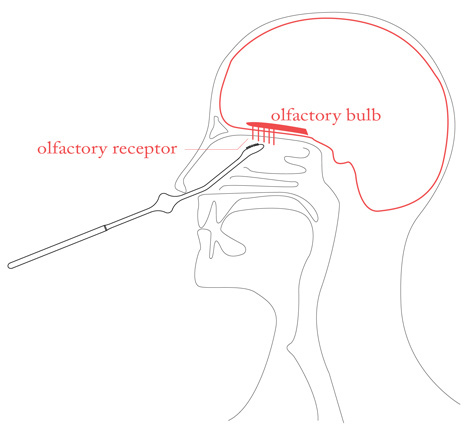Rotten food becomes palatable in human-hyena synthetic biology scenario
Royal College of Art student Paul Gong has imagined how synthetic biology could be used to modify the human body so it can consume and digest rotten food.

As a potential method of preventing food waste, Paul Gong's conceptual Human Hyena project takes cues from the non-fussy eating habits of the scavenger animals.
The idea involves the creation of new bacteria that could live in the human digestive system. This combined human-hyena bacteria would allow the body to eat rotten food without being sick.

Willing participants would also be able to use a series of tools to alter their sense of smell and taste, helping them to stomach mouldy or out-of-date produce.

"I imagine trans-humanists, DIYBio enthusiasts and makers coming together to form a group known as 'Human Hyenas', who want to tackle the increasingly serious problem of food wastage," said Gong.
The bacteria could be ingested using a device shaped like a smoking pipe, which Gong calls the Hyena Inhaler.

To dull the sense of smell, Gong proposes using synsepalum dulcificum – also known as miracle berries. When eaten, these cause sour foods to taste sweet.
The berries would be genetically modified to release an enzyme that causes all the odours of rotten food to be smelt as sweet scents.

Placed on the end of a long thin stick, the adapted berries would be inserted up through the nasal cavity to reach the olfactory bulb, which transmits smells from the nose to the brain.
The enzymes would bind to the olfactory receptors, turning each rotten serving into a delicious meal.

The genetically modified miracle berries could also be used to do the same to the sense of taste, says Gong.
By placing a ring-shaped device onto the tongue, enzymes would be released onto the taste receptors at the front and back, as well as on both sides.

"The Human Hyena raises the question of whether humans can modify their body using synthetic biology in order to solve bigger issues," said Gong, who is studying for an MA on the Design Interactions course at London's Royal College of Art.
Photography is by Andrew Kan.